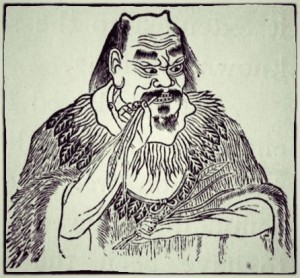Categories of Disharmony
- Neurovascular compression of the neck Structural
Clinical Manifestations
Poor posture, Trauma, Scar tissue, Chronic Stress, Repetitive overhead activities, Sugar Imbalance, Congenital Shoulder – normal range of motion 180 degrees. Usually dominant hand has less range of motion because it is used more. Commonly found in women over 50 years old, hence the nickname “Menopause Shoulder”.
Neurovascular Compression of the neck
- ST 12 area Hukays’s ST12 (.5 to 1cun above ST 12)
- Brachial Plexus Reflex above Hukays ST 12
- Behind SCM
- Atlas Reflex (superior portion of the SCM muscle, just under mastoid process)
Local and symptomatic
- If elbow or shoulder pain, check neck If tennis elbow, check scalenes and neck
- Follow clavicle to LI 15 – palpate entire area Check LI, TH, SI channels for tenderness
- Check LU 1 and LU 2 areas for tenderness
- Check SI 9 and SI 10 on back for tenderness
- Palpate GB 21, Scalenes, and C3
- Recheck range of motion while patient is on table (range of motion may increase with gravity)
- Check CV 4 against tender shoulder points
- Check Dai Mai – usually responsible for first 90 degrees abduction
First treat the constitutional problems detected through palpation of the abdomen, neck and back, specific diseases presented in the patient’s medical history and, lastly, by addressing the symptoms with distal points (if still needed). Document activities of daily living (ADL) skills that are limited
Neurovascular Compression of the Neck – Treatment:
- SP 3.2 (primary point) (scalenes)
- LU 8 needled toward LU 9 (point for numbness and tingling) (scalenes)
- CV 14 needled toward CV 15 (scalenes)
- HT 3, KD 16, ST 12 (direct moxa)
- Yaotongxue, luozhen and TH 3 (reduces pressure pain at C1-Atlas)
- Huato Jiaji C6-7
Local and Symptomatic Treatment:
Trapezius
- Inner Yin
- Huato T7 ~ T12
SCM
- Contralateral TH5 & GB41 (rapid pulse)
- Contralateral TH9 & GB40 (normal pulse)
- Contralateral TH3 & GB34 or GB40 (slow pulse)
- TH16, GB20, GB16
Levator Scapulae
- C3 principle choice, shallow needling
- C4 or Huato C3 or C4 secondary choice
Rhomboid Major
- Huatuo T2 ~ T5
Rhomboid Minor
- Huato T1 ~ C7
Rhomboids are a reflection of the LU
- LU5 or LU5 & LU8 if LU 10 is tender
- KD7 & KD10 if KD2 is tender
- Deltoid
- Under scapular spine
- LI 15~ Center of Deltoid
- KD 7
- Dai Mai
Triceps Brachii
- Below SI 10
- At inferior border of scapula
Biceps Brachii
- 1 ~ 2 inch below LU5
Scalenus Anterior, Medius, Posterior
- SP3, LU8, HT3 (check with any shoulder problem)
- CV15, .5 ~ 1 cun above ST12
Platysma
- LU 1 ~ LU2 Needled 10~15 degrees towards shoulder
Local and symptomatic Treatment:
- LI 15 – Connected to Dai Mai and KD 7 KD 7 is part of bone treatment, good internal and structural treatment and strong distal point to help LI 15
- Check KD 7 against Dai Mai
- If KD 2 tender, check KD 10 (water point) or KD 27 then check range of motion(ROM)
Ion Pumping Cord Treatment
- Yin/Yang pairs HT 7 (red clip) and SI 5 (black clip) – SI type shoulder pain
- Yin/Yang pairs LU9 (red clip) and LI 5 (black clip) – LU/LI type shoulder pain
- Yin/Yang pairs PC 7 (red clip) and TH 4 (black clip) – Shoulder pain, hard to raise the arm & extend toward the back
PATIENT EDUCATION
Gentle stretching of neck and shoulders Be more conscious of their posture Stress reduction activities: meditation, yoga, tai chi, qi gong, breathing exercises
SOURCES
Kiiko Matsumoto’s Clinincal Strategies Vol.1 pp. 227-230 & Vol. 2 p. 153
http://keyacupuncture.wikispaces.com/Upper+Extremity+Pain+-+Kiiko+Matsumoto+Japanese+Style

